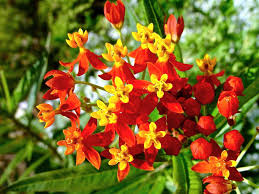Butterfly Weed Plant, The butterfly weed plant (Asclepias tuberosa) is a stunning perennial native to North America, recognized for its vibrant orange flowers and essential role in supporting pollinators. With its hardy nature and ecological importance, this plant has become a favorite among gardeners and environmentalists alike. In this article, we’ll explore the characteristics, benefits, and tips for growing butterfly weed in your garden.
What is the Butterfly Weed Plant?
Belonging to the milkweed family (Apocynaceae), the butterfly weed plant stands out for its bright, fiery-orange blossoms. Unlike other milkweed varieties, it produces little to no milky sap, making it unique within its genus. It thrives in well-drained soils, tolerates drought, and is known for flourishing in sunny environments such as meadows, roadsides, and open prairies.
Ecological Importance: A Haven for Pollinators
Butterfly weed plants are crucial to the ecosystem, attracting a variety of beneficial insects. These flowers are a significant nectar source for butterflies, bees, and other pollinators. Monarch butterflies, in particular, rely on the butterfly weed to complete their life cycle. While monarch caterpillars primarily feed on other milkweed plants, the butterfly weed provides essential nectar for adult monarchs during migration. Additionally, it attracts native bees and hummingbirds, supporting biodiversity in your garden.
How to Grow Butterfly Weed
Butterfly weed is not just beautiful but also relatively easy to grow. Below are some tips to help you get started:
- Planting Location: Choose a spot with full sun exposure to encourage healthy growth and flowering.
- Soil Requirements: Well-drained sandy or loamy soil is ideal, as this plant does not tolerate waterlogged conditions.
- Watering: While the butterfly weed is drought-tolerant, water it regularly during its first season to establish strong roots.
- Spacing: Leave about 18-24 inches between plants to allow them to spread.
- Propagation: Butterfly weed can be grown from seeds or divided clumps. Seeds may take time to germinate, so patience is key.
- Maintenance: Deadheading (removing spent flowers) promotes longer blooming. Cut back stems in the fall to encourage new growth the following spring.
Butterfly Weed in Landscaping
This plant’s bold color and versatility make it an excellent addition to any garden design. It works well in wildflower meadows, pollinator gardens, and native landscapes. Butterfly weed pairs beautifully with other drought-tolerant plants such as coneflowers, black-eyed Susans, and lavender, creating a visually appealing and pollinator-friendly environment.
Butterfly Weed and Conservation Efforts
The butterfly weed plant plays an essential role in conservation by promoting pollinator populations. With the alarming decline of bees and butterflies, planting native species like the butterfly weed can make a meaningful impact. Many organizations encourage homeowners to plant it to restore habitats that support pollinators.
Conclusion
The butterfly weed plant is a wonderful choice for gardeners who want to add beauty while contributing to the environment. Its vibrant flowers not only brighten up landscapes but also sustain critical pollinators like bees, butterflies, and hummingbirds. Whether you’re an experienced gardener or just starting, butterfly weed is a rewarding plant to cultivate, offering benefits for both humans and nature.
By incorporating this colorful perennial into your garden, you create a thriving habitat that supports biodiversity—and enjoy a lively display of pollinators fluttering through your outdoor space.
You Might Also Like These:



